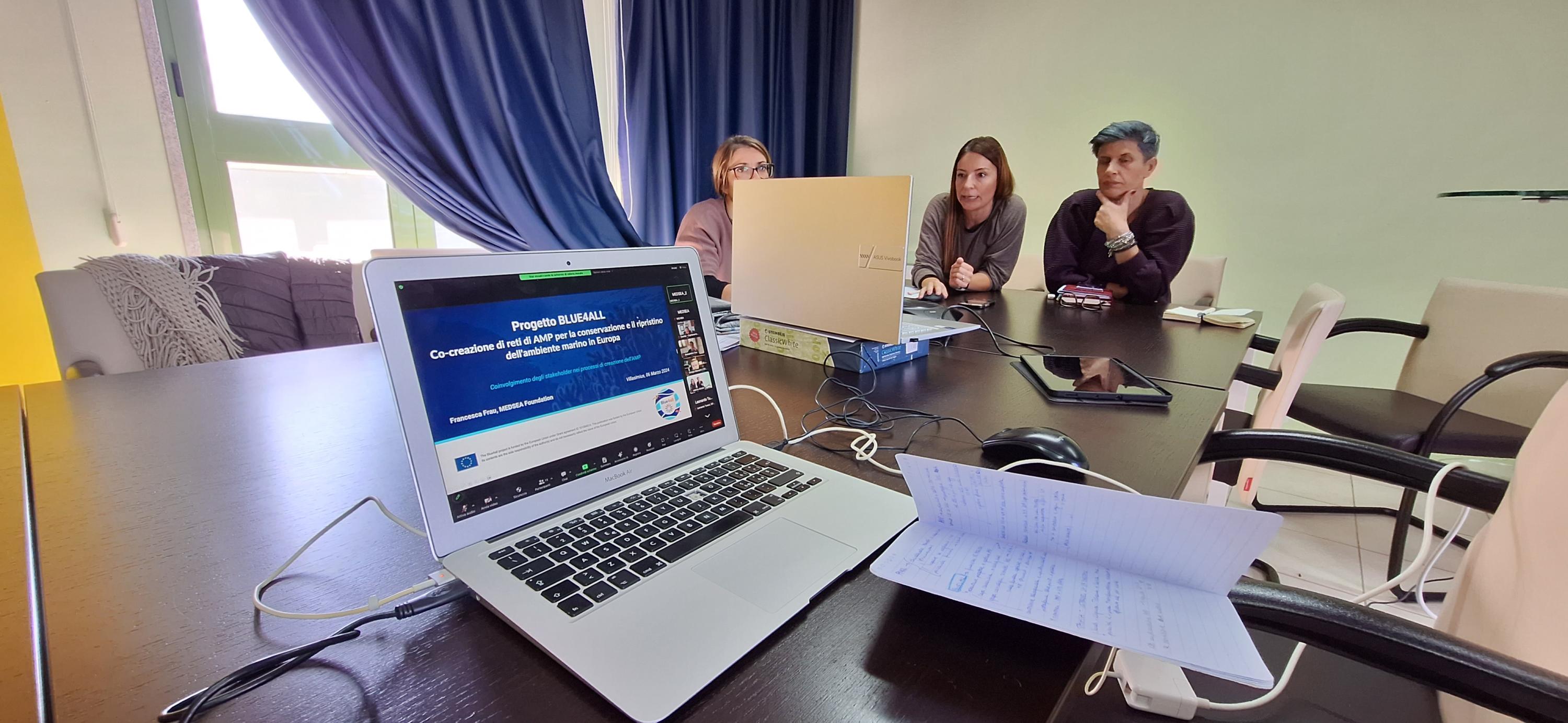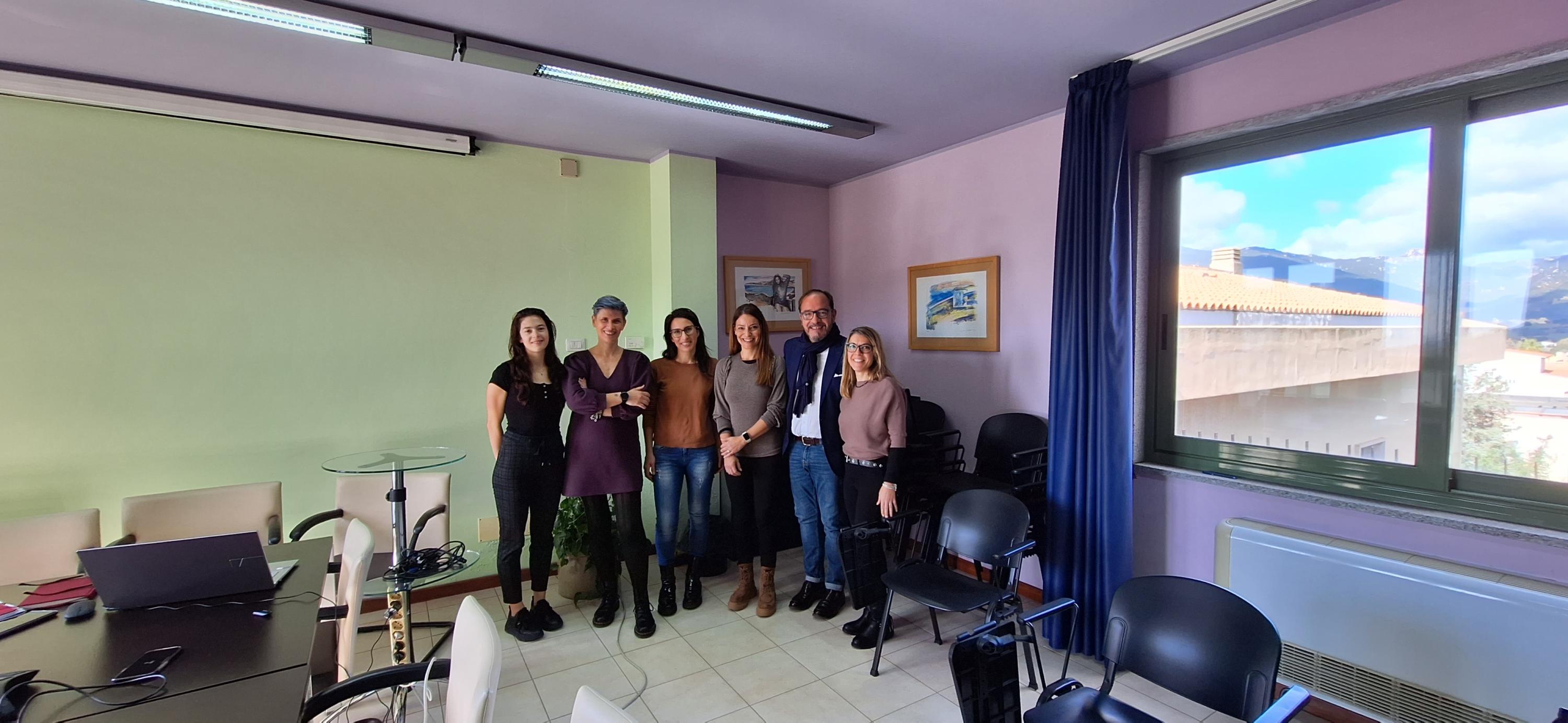On March 7th, at the premises of the Municipality of Villasimius, the operational meeting of the Blue4All project took place. Funded by the European HORIZON Europe Ocean Mission program, the project aims to strengthen the network and management of Marine Protected Areas (MPAs) in Europe, with the MEDSEA foundation and the Capo Carbonara Marine Protected Area as partners.
The meeting, coordinated by the MEDSEA Foundation and the Capo Carbonara Marine Protected Area - also Blue4All’s Living Lab - was attended by the mayor of Villasimius and president of the MPA, Gianluca Dessì, the environmental councillor Sebastiano Ledda, the director of the MPA, Valeria Masala, and the MEDSEA sea activities manager, Francesca Frau. Connected remotely were representatives from institutions, from the academic and environmental Institutions, included: the Regional Department for Environmental Defense, the Higher Institute for Environmental Protection and Research (ISPRA), the CNR IAS - Institute for the Study of Anthropogenic Impacts and Sustainability, the Port Authority of the Sea of Sardinia, and the Sardinia Forestry Management. During the meeting, the next steps of the project were discussed, including the establishment of a Restricted Stakeholder Engagement Group (SEG), composed of representatives from national, regional, and local authorities, as well as the private sector, including local operators, sectoral groups, and key interest groups. The "SEG" will play a fundamental role in the application, co-creation, and testing of tools aimed at optimising MPAs’s operations and their networks.

The event highlighted the joint commitment of local, national, and international bodies, as well as the private sector, towards the conservation and restoration of marine habitats and biodiversity.
Among the project's outputs is the creation of a Blueprint Platform for MPAs, which is accessible, intuitive, and equipped with effective, efficient, and resilient tools, a fundamental instrument to face current environmental challenges. "This platform aims to facilitate the sharing of knowledge, best practices, and resources, thus contributing to improving the management of marine protected areas on a European scale," explained Francesca Frau. Moreover, the Capo Carbonara Marine Protected Area, in addition to being a project partner, is also one of the selected Living Labs, which will initiate a discussion on rezoning.The meeting - preparatory for the organisation of the engagement groups - also highlighted the importance of collaboration among different actors, including research institutions, universities, environmental authorities, and local operators, for the project's success. The presence and support of these entities are essential to ensure that the developed solutions are based on solid scientific evidence and are tailored to the specific needs of local communities and MPAs.
.jpg)
Displayed in the photo: MEDSEA team together with the Capo Carbonara MPA's team and the Villasimius's major and MPA president, Gianluca Dessì
The mayor of Villasimius and president of the Capo Carbonara MPA, Gianluca Dessì, expressed enthusiasm for the path taken with Blue4All, highlighting how the project offers "a valuable opportunity for dialogue with economic activities and the local community on the benefits of marine protected areas." He also emphasised a crucial aspect related to sustainability, noting that "the demands of boats in the protected marine space currently exceed all possibilities."
Valeria Masala, director of the MPA, pointed out how studies conducted over the years have shown the need to rethink the zoning of the Marine Protected Area. Therefore, Blue4All arrives at the "right time." Moreover, addressing the participants of the work table, Masala adds: "knowing that you will be there and support us in this journey is rewarding for us."
Francesca Frau, a marine biologist and the MEDSEA project manager for Blue4All, provided a detailed overview of the ambitious Blue4All project during the meeting in Villasimius. The project stands out for its broad scope, involving 22 international partners, 25 Marine Protected Areas (MPAs), and MPA networks, ranging from small coastal areas to large MPA networks that protect deep marine habitats. This geographical and dimensional diversity is crucial for the project, as it includes 12 informational sites and 13 "living" laboratories, representing a wide spectrum of geographical conditions (e.g., location, size, habitat) and governance (e.g., protection status, degree of stakeholder involvement) that reflect most of the MPAs in EU waters.
The next meeting will be held on March 18th with the local economic activities operating in the Marine Protected Area (MPA) to introduce the Stakeholder Engagement Group (SEG).
